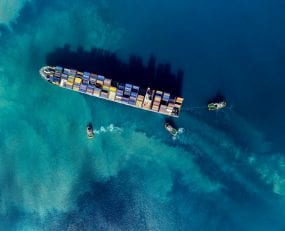
In line with much sentiment in the container shipping industry, Maersk articulated a sense of optimism about profit growth in the near future even as it described weaker volumes in the third quarter and announced substantial redundancies.
The company issued a “Trading Update” on Tuesday (October 13), in which it reported, “unaudited revenue of $9.9bn and an EBITDA (earnings before interest, depreciation and amortisation) before restructuring and integration costs of $2.4bn for Q3 2020, driven by a continued recovery in demand and our initiatives to improve cost”.
The underlying picture is that much of the container industry remains ‘ahead of the curve’ in terms of the balance of supply and demand and this is underpinning profits. A similar performance was seen at Hapag Lloyd last week, with its CEO Rolf Habben Jansen describing a recovery in Q3 which he expects to continue into next year. That said, the recovery is relative to supply, with Maersk reporting container volumes 3% lower than the third quarter in 2019.
The company expects “the full year 2020 EBITDA to be in the range of $7.5-8.0bn, before restructuring and integration costs”. The previous forecast was between $6.0-7.0bn.
However, the better prospects for Maersk did not delay the company in its restructuring projects. In the same statement, the company announced that it would take a “restructuring charge of around $100m in Q3 2020 related to the redundancies of approx. 2,000 employees as the consequence of the changes to the organisation in Ocean and Logistics & Services announced on September 1, 2020”.
Stability in the sector is relative. The market itself is experiencing all sorts of distress, from sharp jumps in freight rates to shortages in containers. Although the leading container lines may appear to have a sense of serenity, as Rolf Habben Jansen commented last week and Maersk endorsed, “there will be a clear long-term effect on the global economy from COVID-19, which will have an impact on the flow of goods”. Things are still very uncertain.
Source: Transport Intelligence, October 13, 2020
Author: Thomas Cullen
___________________________________________________________________________________________________________________________________________